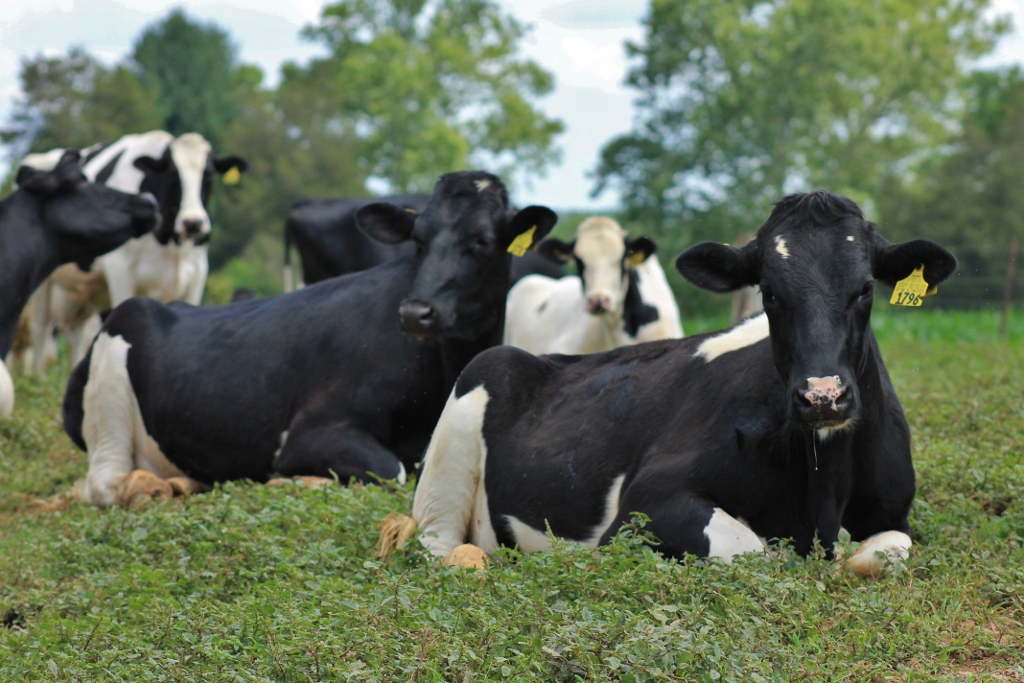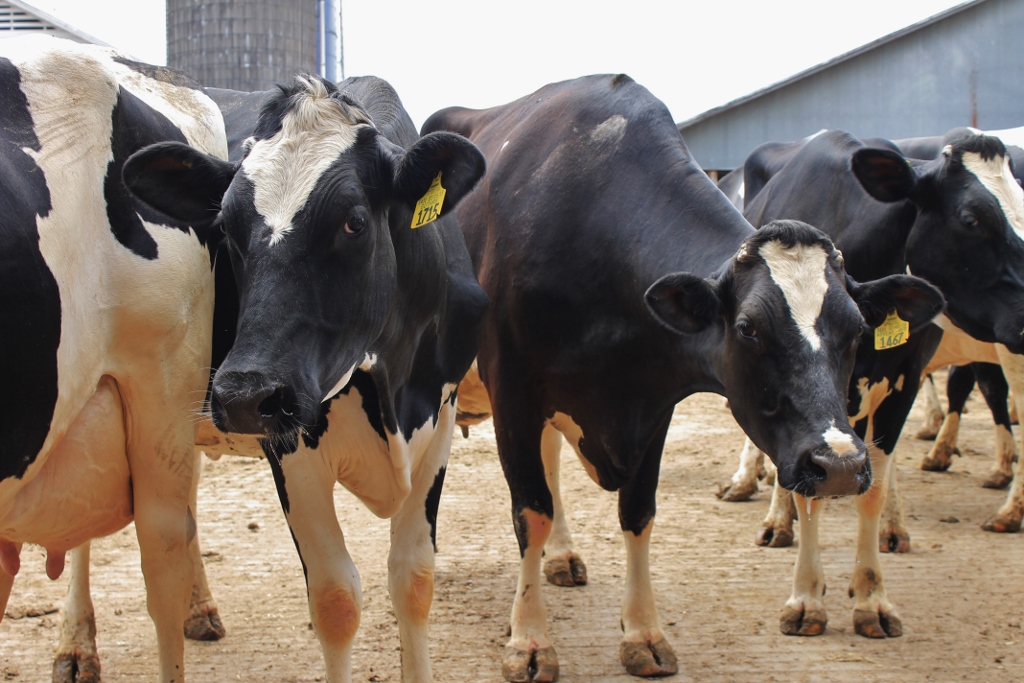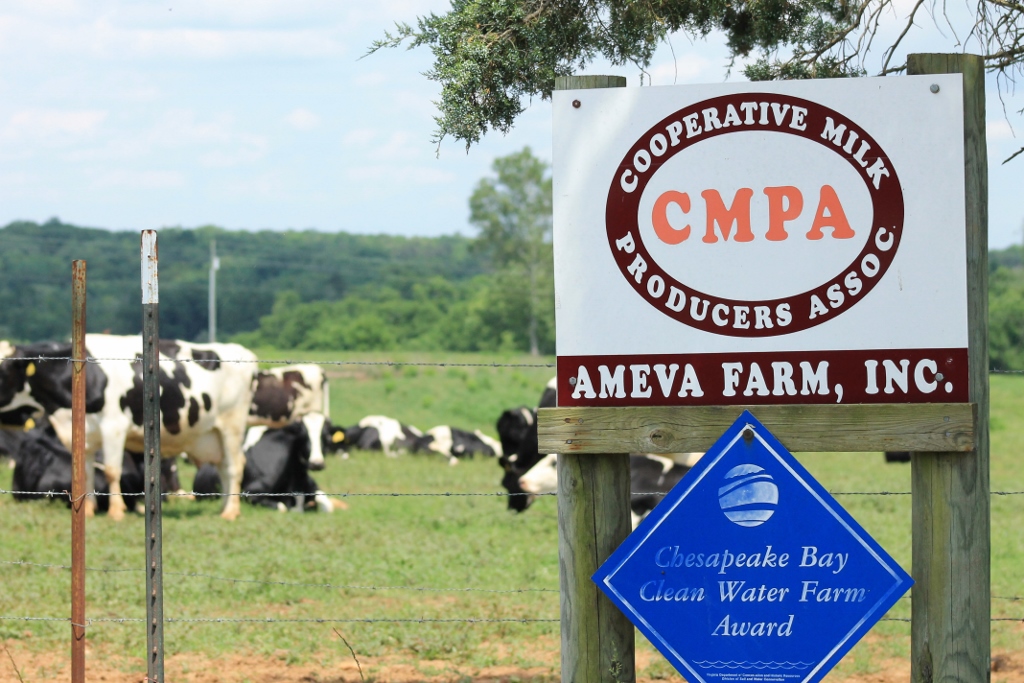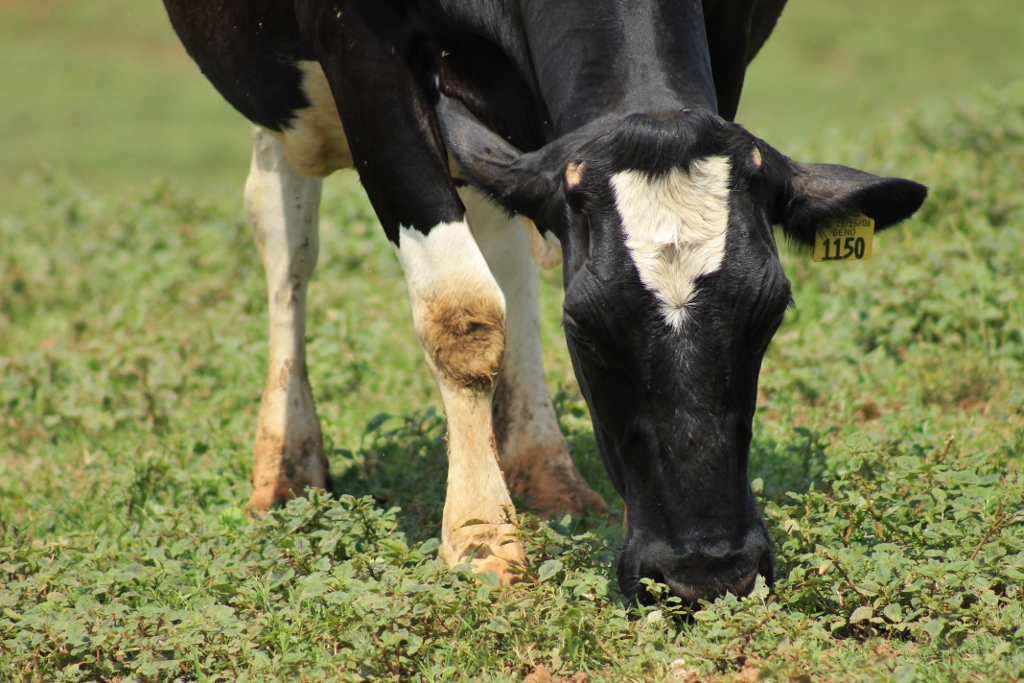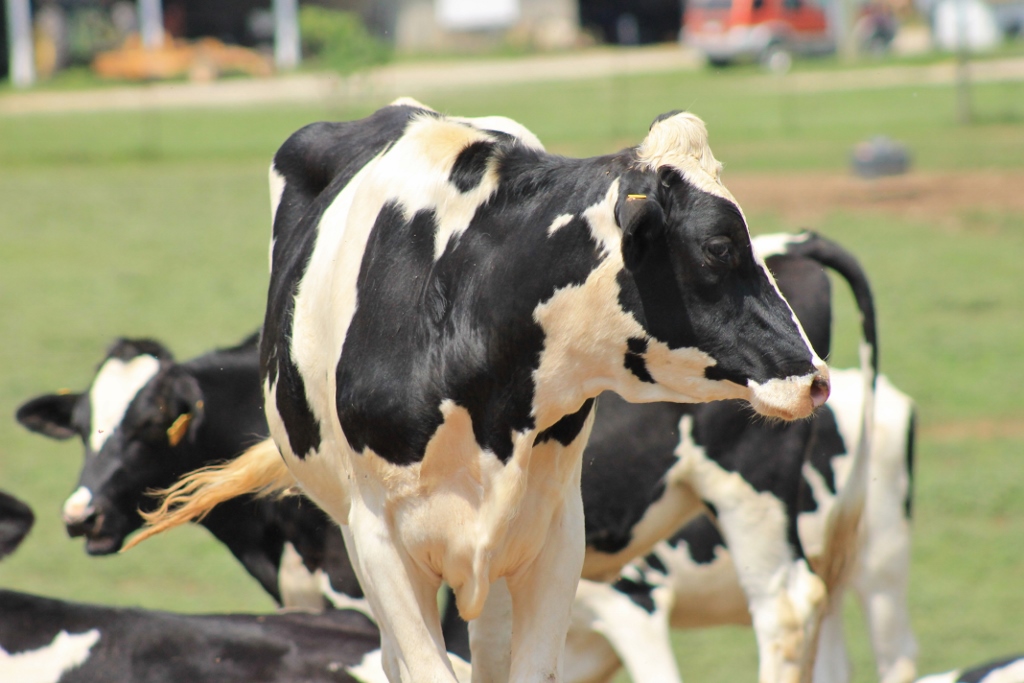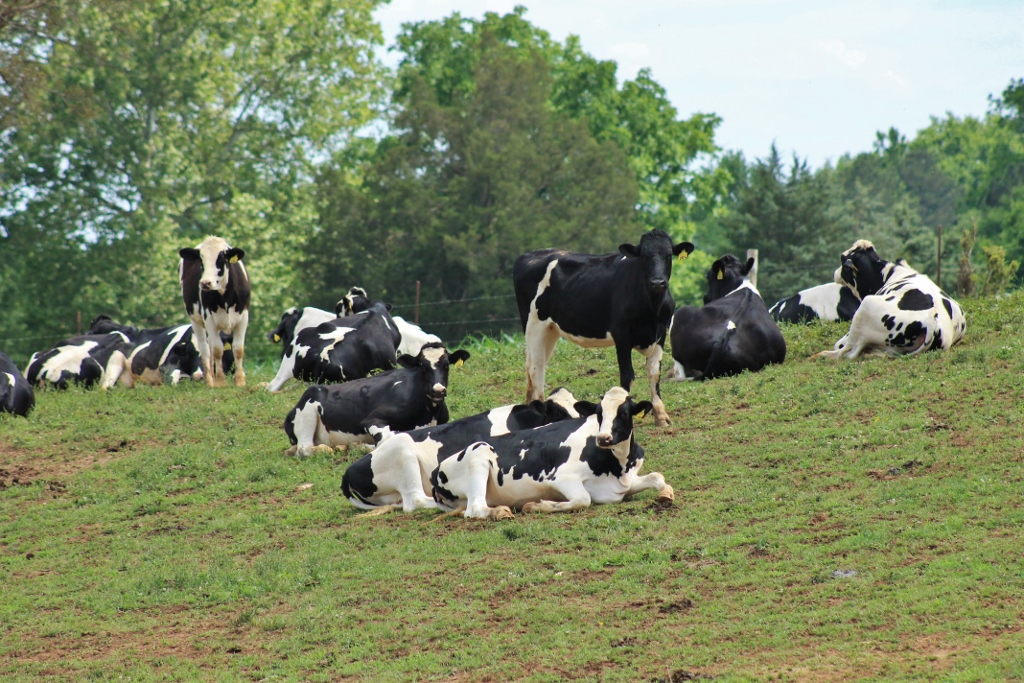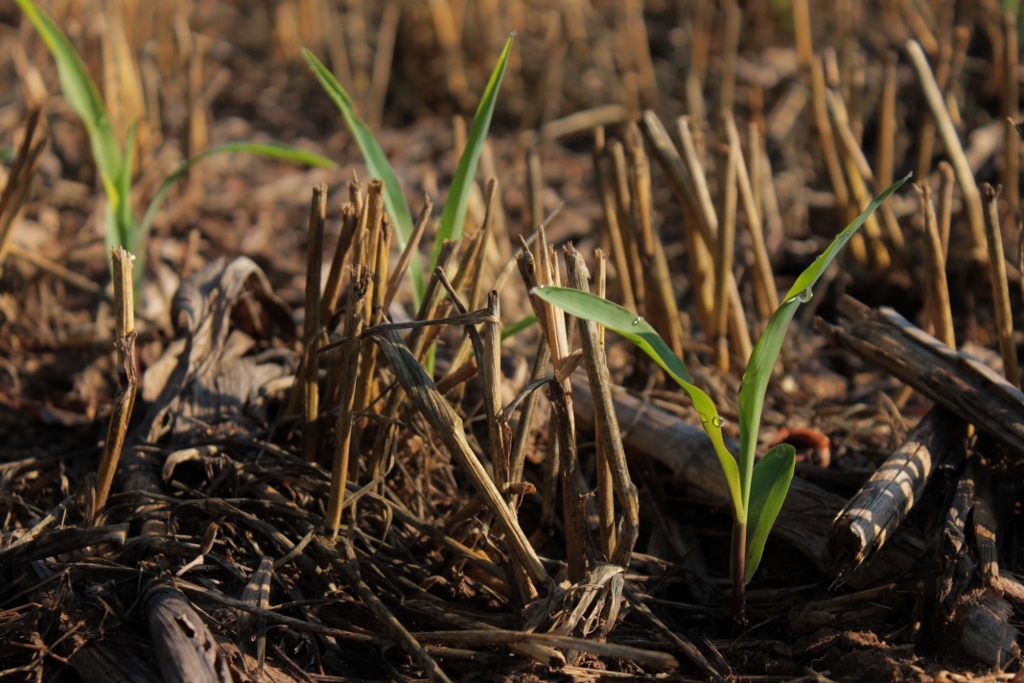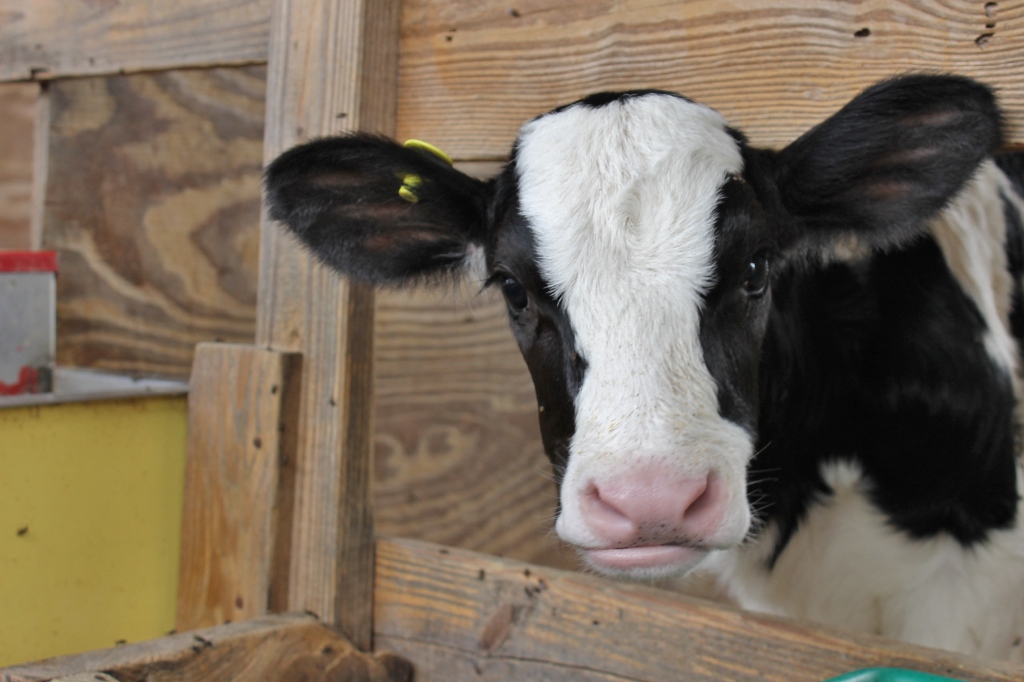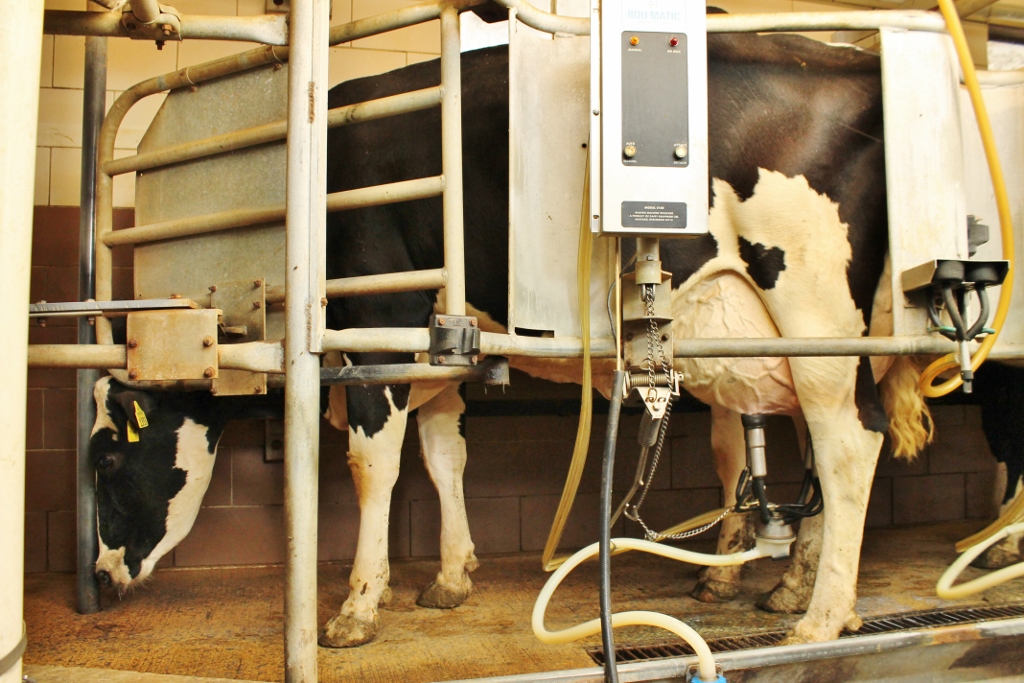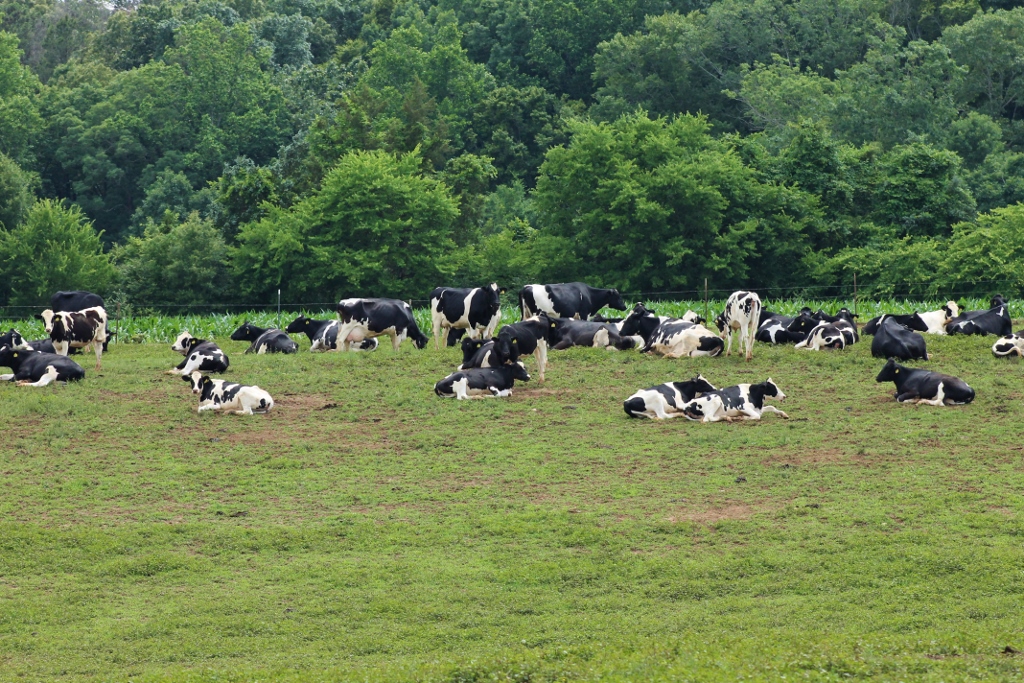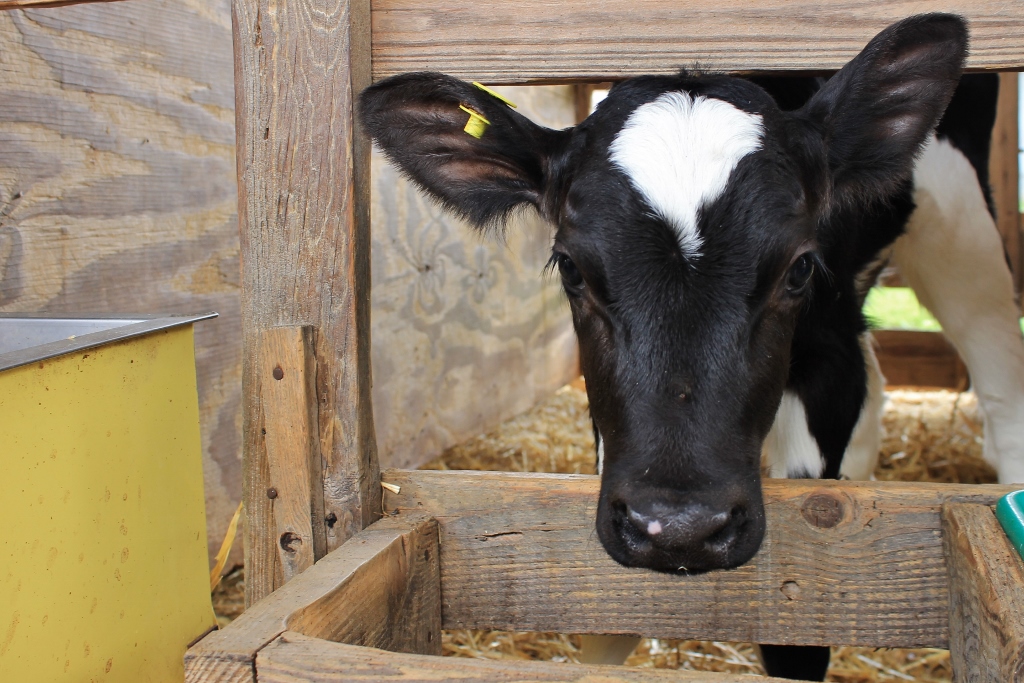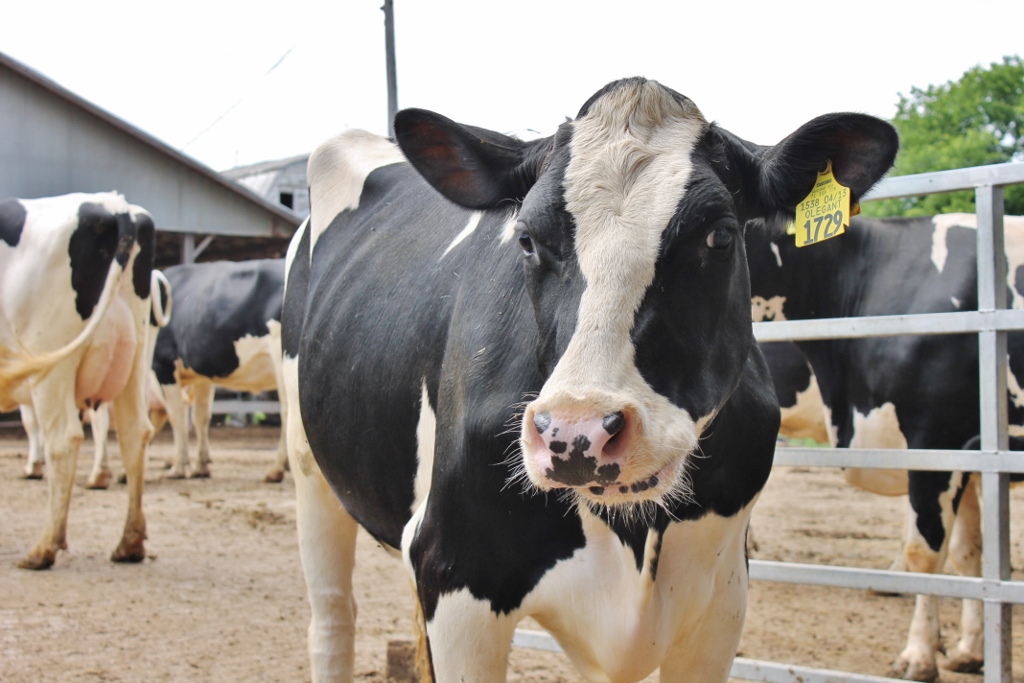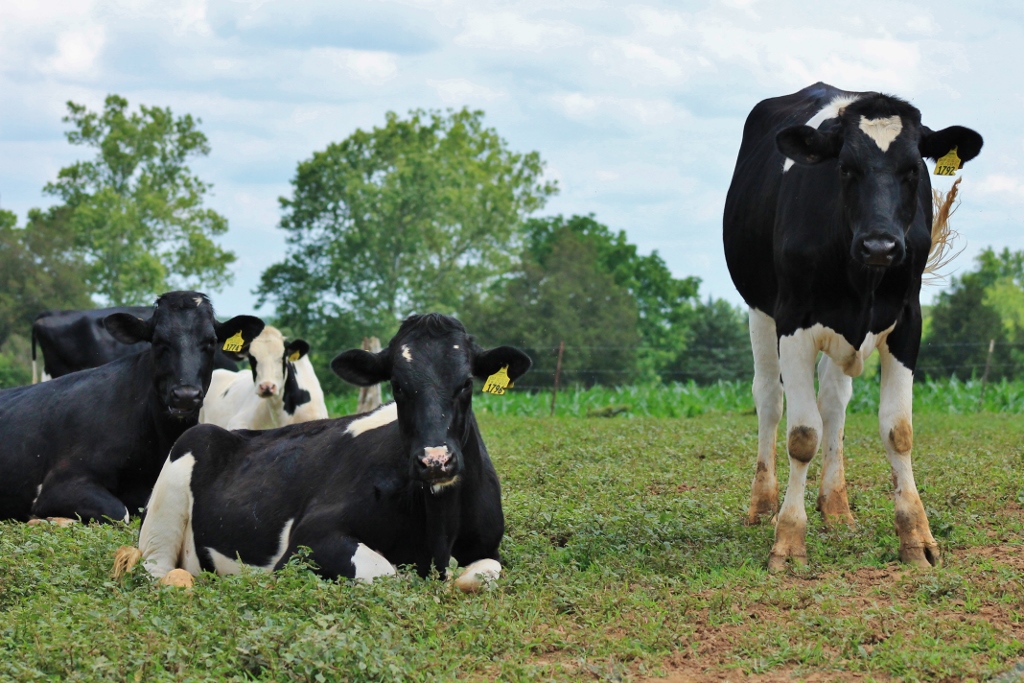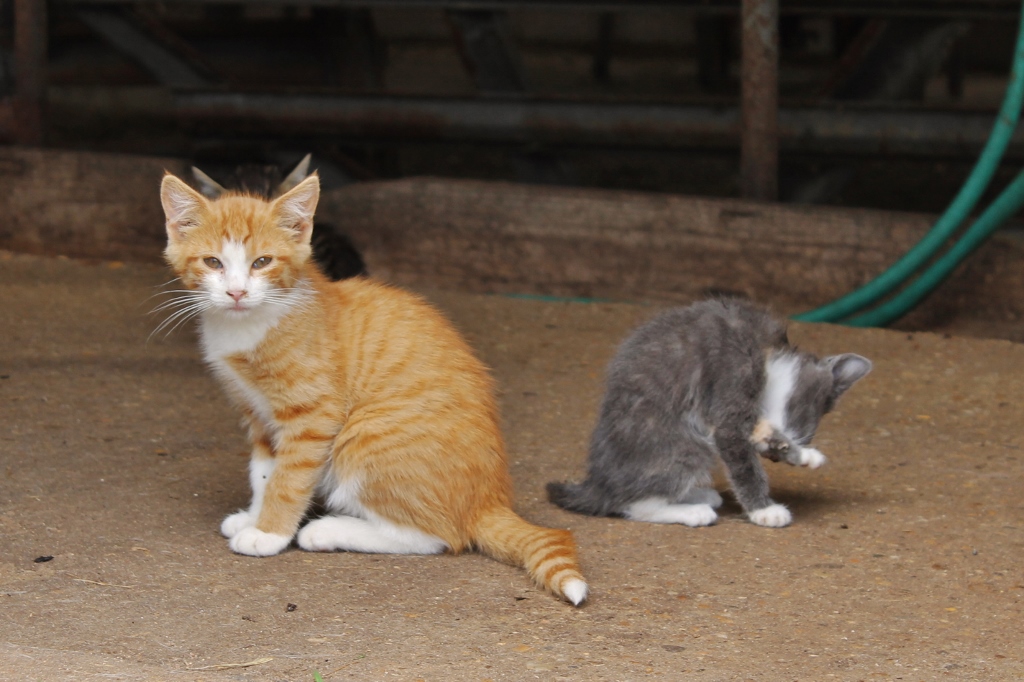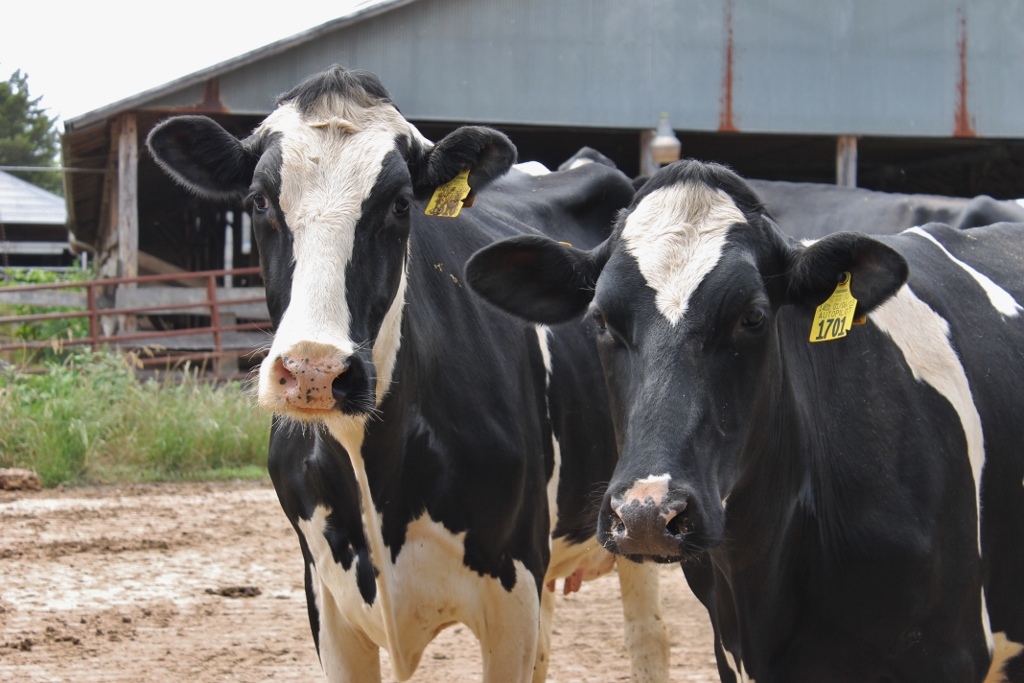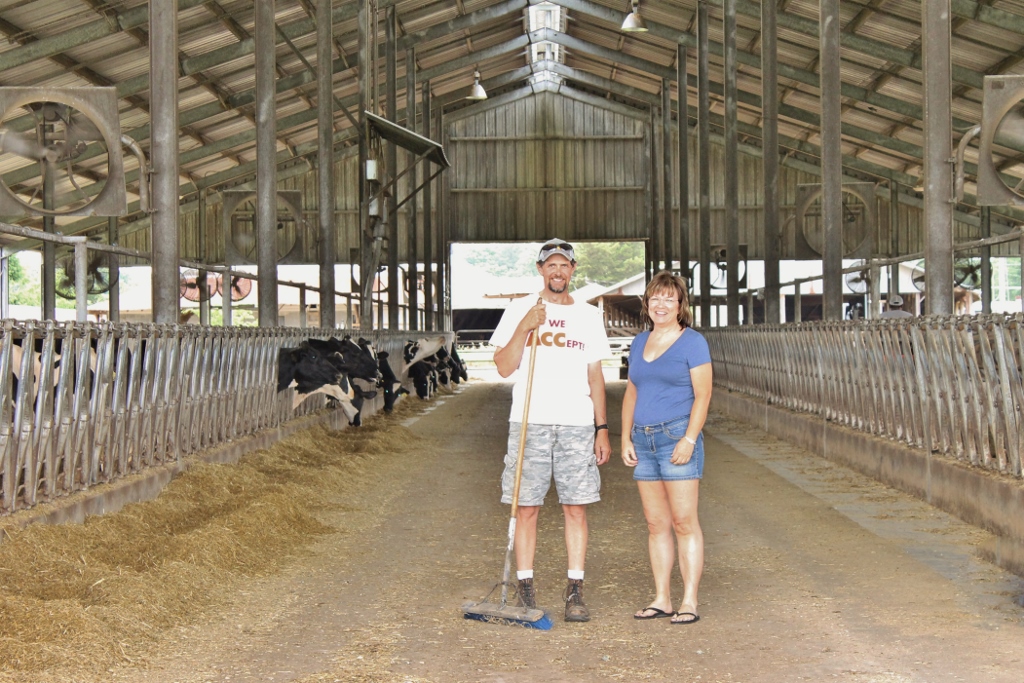
Jimmy and Donna Kerr stand in their freestall barn where the milking herd lives. The barn is built for cow comfort: fans and sprinklers keep cows cool, and the cows can rest on sand bedding, socialize, or get up to eat as they please.
Jimmy and Donna Kerr run the Amelia County dairy operation today, but it was originally established several generations ago as a crop and tobacco farm. In 1948, Jimmy’s grandfather drove to Wisconsin and returned with thirteen registered Guernseys, the start of the first dairy herd at the operation. The herd soon moved across the road, where a milking facility and barns were constructed.
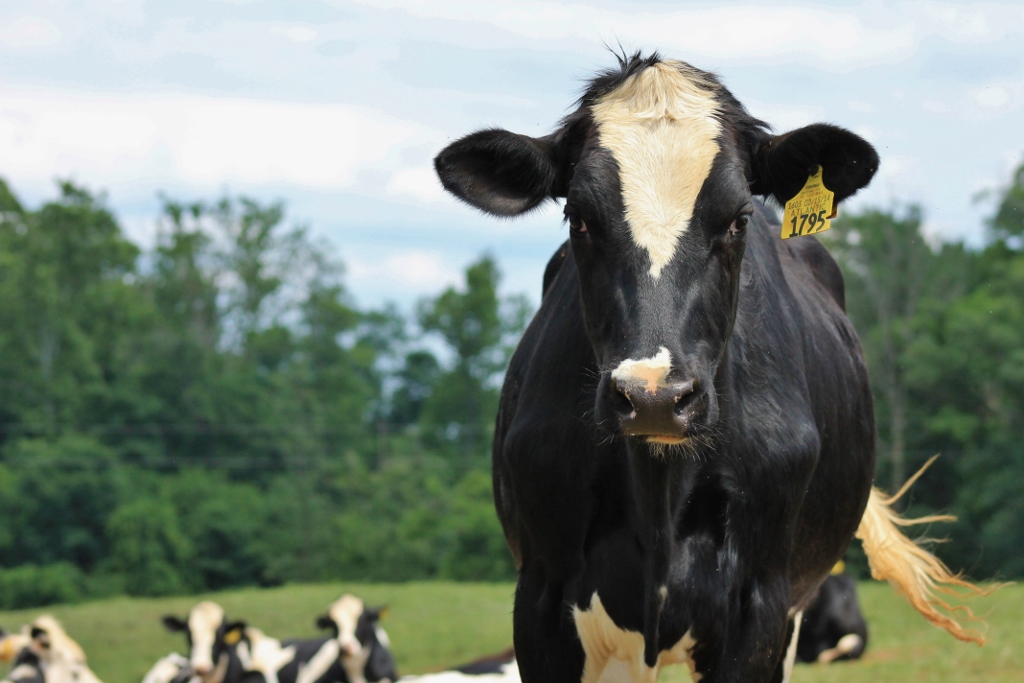
The dairy herd at Ameva Farm was founded with Guernseys, but today it consists of black-and-white Holsteins. Holsteins are a highly productive dairy breed and are used on most milking herds in the U.S.
Several decades after his grandfather set the foundation for the dairy farm and the herd eventually shifted in favor of Holsteins, Jimmy went to study at Virginia Tech and met his wife Donna in the Dairy Science program. After graduating in 1982 and returning to the farm to start a family, they helped their son Alex and their daughter Jamie develop a passion for showing dairy animals at a young age. Donna recounts the story of Jamie watching her big brother prepare calves for shows and earnestly anticipating her turn to be old enough to participate, only to fall off of a gate the day before the show. She was determined to have her turn in the show ring despite the setback. “She broke her arm, but the next day she was showing!” Donna and Jimmy remark. Both Jamie and Alex continued to raise and show cattle throughout their youth and remained active in the Virginia Junior Holstein Association for a number of years. Today, Alex helps manage the operation alongside his father.
Ameva Farm operates much like other family dairy farms in the state. The 200-head milking herd goes to the parlor twice each day, once at 3:30 in the morning and again at 2:00 in the afternoon. Farm employees Homer Neese and Lane Staten help Jimmy with milking. When they are not being milked, the cows live in a freestall barn where they can come and go from feed to sand bedding as they please. Keeping the cows content and comfortable requires someone willing to mix feed, bed up the barn, and scrape manure out of the aisles daily. “These cows are our livelihood,” Donna says, noting that cow welfare directly affects the farm’s bottom line. “If they are not in good health and well fed, we don’t make money.” To help with the chores, Jimmy and Donna enlist the help of assistant herdsman Chief Moore, Joel Linthicum and part-time help John Sloan and Tommy Glover. Chief’s wife Donna also helps feed calves. “It takes a village to raise a cow,” Donna jokes.
The calves on the farm require special care of their own. Like any newborns, they can become sick if they are stressed or malnourished, so they are fed four doses of colostrum in the first two days after birth to ensure good transfer of disease immunity from their dams. The calves are then fed a milk replacer which functions akin to baby formula to provide calves with the nutrition they need. Calves are kept in a special barn to protect them from contact with diseases, and as they grow older, they are put in a larger group to help them learn to socialize with a herd.
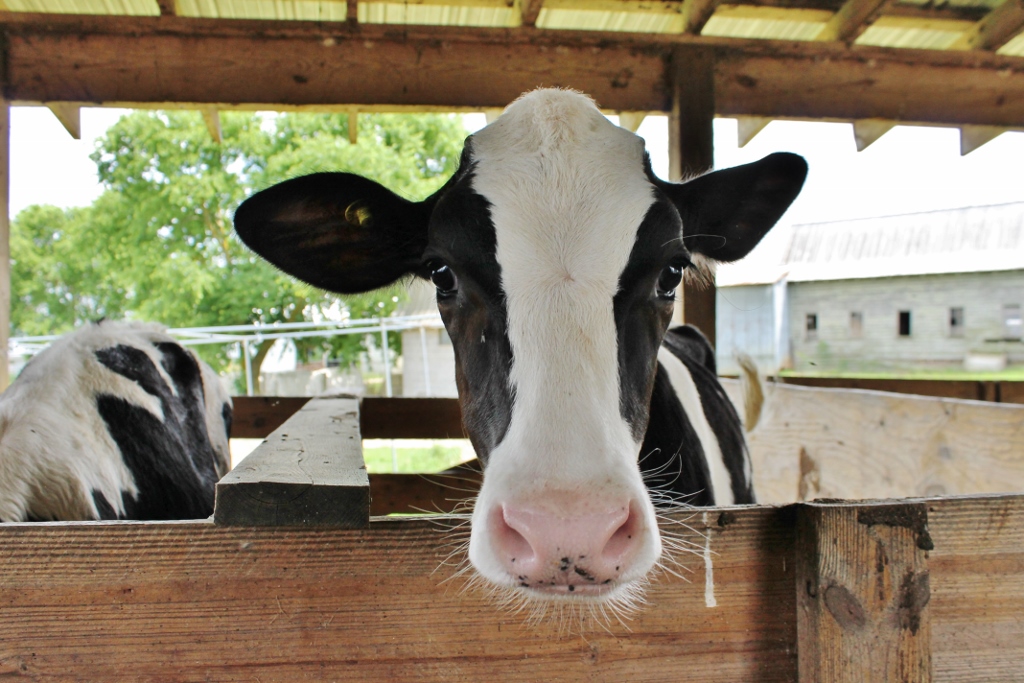
Calves at Ameva Farm receive special care after birth to ensure a good start. As they grow older, they learn to eat pelleted feed and hay.
Throughout their time in the calf barn, calves have access to a pelleted feed. As calves grow, they choose to consume more of this feed in preparation for weaning at seven weeks of age. Older calves become heifers—the teenagers of the cattle world—and when they approach maturity, they are bred and eventually enter the milking herd. Cows in the milking herd give birth to calves, produce milk for several months, and enjoy a “dry period” of rest before the next calf arrives.
Like most dairy farmers, the Kerrs grow much of their feed right on the farm including small grains and corn for silage and grain. They also grow brown midrib sudangrass which turns into an easily-digestible silage for the cows after it is chopped and stored. Jimmy uses modern soil conservation practices on his farm for his crop production program. “My grandfather was big into soil conservation. We carried those practices on,” he says. “Conservation is a big thing for us.” On Ameva, improved practices include contour strips and no-till farming to promote healthy soil. “You can’t buy topsoil at Wal-Mart,” Donna notes.
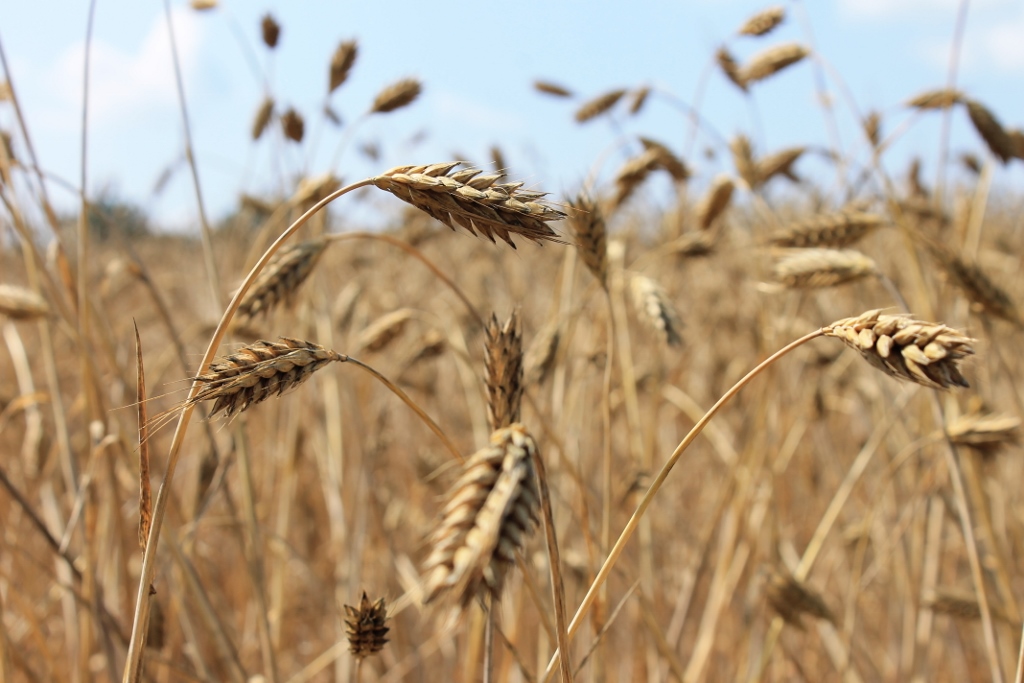
The Kerrs grow most of their feed right on the farm. Some of their crops are grown for silage and some are used for grain. Small grains grow in the fall through spring. Corn and sudgangrass grow during the spring and summer. Both can be chopped and ensiled at harvest time and fed to the milking herd.
Jimmy’s son Alex helps with the field work and crop management, which occurs year-round since small grains grow in the fall through spring and corn grows in the summer. And, of course, the cows need to be milked and fed year-round.
The Kerr family dedicates a considerable amount of each day to farm work. “We have 9-10 hour days, and that’s typical,” Donna says. “Milking cows is almost an 8-hour day, and that’s just milking.” Nonetheless, Jimmy and Donna place a high value on taking time to educate others about agriculture. Donna recounts one particular youth education program years ago that motivated her to take action. “My first question to the kids was, ‘Where does milk come from?’ I kept hearing, ‘The grocery store! The grocery store!’” she says. “I came home and said, ‘We have to do something!’ These are our future regulators and legislators.”
Agricultural education has been a keystone of the farm since the day the Kerrs first hosted schoolchildren on a field trip when their son Alex entered kindergarten. “We’ve had lots of different tour groups from boy scouts to school children,” Jimmy says. In recent years, schools like Spring Run Elementary have chosen to return annually. Donna notes that well over half of the U.S. population is three or more generations removed from farming, so naturally many children and adults have misunderstandings about how their food is produced. The tours and question-and-answer sessions seem to have made an impact over the years. “Sometimes there’s a lightbulb moment for them,” Jimmy says.
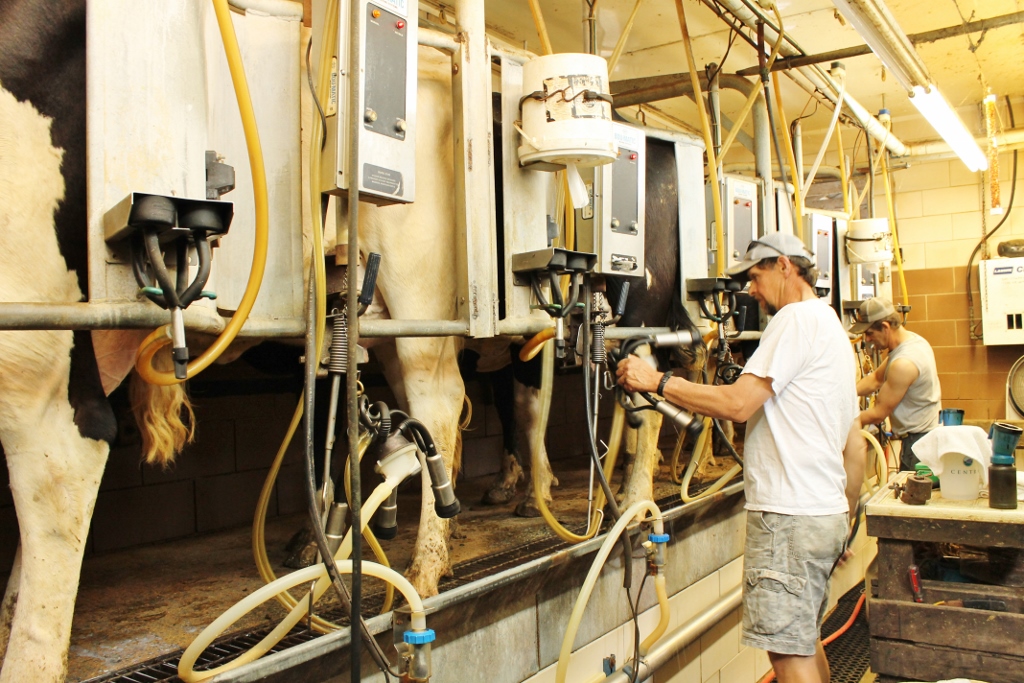
Cows are brought to the milking parlor twice each day. Each cow is milked for several minutes, and afterwards, she is able to return to the barn to eat, rest, or socialize. Meanwhile, the Kerrs and their employees clean and sanitize the parlor equipment after every milking.
Donna and Jimmy’s roles in the community have given them ample opportunities to share their farm with adults, too. They have given dairy tours to representatives of several government agencies. Donna also believes that the teachers who tour the farm with their classes can go home armed with knowledge to teach many more children about farming.
Not all students and adults have the opportunity to visit the operation in Amelia, but that does not deter Donna from sharing her message outside of the farm, especially to the state’s decision-makers. In her role as past President of Amelia County Farm Bureau and her time serving on the state Forestry and Natural Resources Committee, Donna has developed rapport with legislators and their aides who sometimes contact her to ask questions about agricultural issues raised by the public. “You never know who you can affect,” Donna says.
When they are not busy on the farm or performing agricultural outreach, Jimmy and Donna still find time to engage with industry groups. Donna is on the board of the Piedmont Soil and Water Conservation District and was an advisor to the Virginia Junior Holstein Association for too many years to count. Meanwhile, Jimmy is the president of Cooperative Milk Producers and was also involved with the Virginia Holstein Association.
Back at Ameva Farm, Jimmy and Donna want consumers to know that they raise a product that they believe in. Even though farm life is busy, they are happy to help others learn about their occupation. To instill confidence in the dairy industry as she tells her farm story, Donna relates that her family is committed to their own product. “We’re consumers too. I think people forget that perspective. We believe in dealing with our customers,” she says. To the Kerrs, producing a good product and sharing it with others is not simply a business—it is a lifelong passion.
Additional Resources for Readers:
Learn about Dairy Farming from Virginia Cooperative Extension
Virginia State Dairymen’s Association

